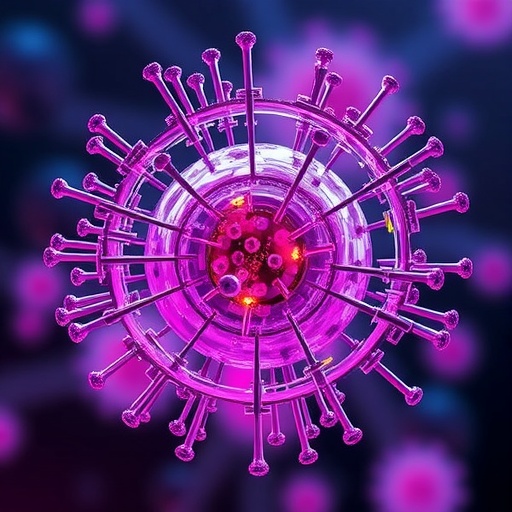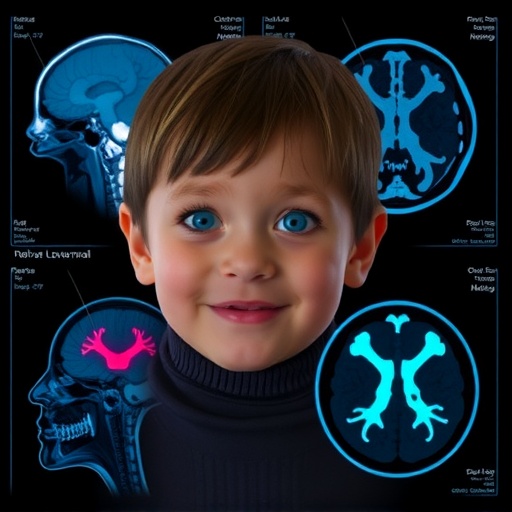A groundbreaking computational strategy developed by scientists at St. Jude Children’s Research Hospital is poised to revolutionize the engineering of chimeric antigen receptor (CAR) T cells. These immune cells, specially reprogrammed to attack cancer cells, have shown exceptional promise in treating blood cancers but stumble when faced with the complexity of solid tumors and heterogeneous antigen expression. The new computational method enables the rapid design and optimization of tandem CAR constructs that simultaneously target two distinct tumor-associated antigens, enhancing their effectiveness against cancers that evade conventional single-target immunotherapies.
Traditional CAR T cell therapies hinge on redirecting a patient’s own T cells to recognize and destroy tumor cells expressing a specific surface antigen. However, tumors often exhibit antigen heterogeneity, meaning not every cancer cell expresses the same surface marker. This phenomenon enables some malignant cells to escape immune detection and facilitate tumor relapse. The idea of tandem CARs, which simultaneously recognize two tumor-associated antigens, aims to circumvent this problem by broadening the recognition spectrum of engineered T cells. But experimentally engineering such multi-specific CARs has proven fraught with challenges, including poor expression of CAR proteins on the surface of T cells and diminished tumor-killing capabilities.
Addressing these obstacles, the multidisciplinary team at St. Jude developed a novel computational pipeline that screens an extensive library of theoretical tandem CAR designs. By integrating biophysical, structural, and functional characteristics of known effective CAR constructs, the algorithm assigns a comprehensive “fitness” score to each design. This score predicts critical attributes such as protein folding stability, surface expression propensity, and functional efficacy in tumor targeting. The highest-ranking candidates undergo further refinement through in silico optimization that enhances their antigen binding affinity and expression levels, condensing what would traditionally be years of experimental trial and error into mere days.
.adsslot_jQAt2ECLXN{ width:728px !important; height:90px !important; }
@media (max-width:1199px) { .adsslot_jQAt2ECLXN{ width:468px !important; height:60px !important; } }
@media (max-width:767px) { .adsslot_jQAt2ECLXN{ width:320px !important; height:50px !important; } }
ADVERTISEMENT
The researchers put this computational model to the test using a tandem CAR engineered to target two proteins prevalently associated with pediatric brain tumors: B7-H3 and IL-13Rα2. Initial non-optimized tandem CAR constructs demonstrated poor surface expression, impeding their ability to recognize and bind these tumor antigens effectively. Upon applying the computational design improvements, these CARs not only displayed robust surface expression but also exhibited enhanced tumor-specific cytotoxicity in in vivo mouse models. Remarkably, mice treated with the optimized tandem CAR T cells achieved complete tumor clearance in four out of five cases, a stark contrast to the single-target CAR T cell treatments where tumor regrowth was consistently observed.
One of the most significant technical insights was the identification of a problematic sub-region within the tandem CAR structure that critically limited expression and function. By pinpointing this bottleneck, the computational model could specifically optimize linker sequences and structural domains to restore proper folding and membrane localization without compromising antigen recognition. This structural fine-tuning represents a crucial advancement, as improper surface expression has long undermined the potential of bi-specific CAR T therapies.
Beyond this particular tandem CAR, the computational pipeline demonstrated versatility by improving multiple other tandem CAR designs in vitro, each showing superior killing of cancer cells compared to their non-optimized versions. This generalizability suggests the technology could be applied across a wide range of CAR constructs targeting diverse cancers, accelerating the development of next-generation multi-targeted immunotherapies.
The foundation of this success lies in the integration of artificial intelligence with structural biology and immunotherapy research. The algorithm was trained on detailed datasets encompassing the folding patterns, inter-domain interactions, and aggregation tendencies of known CAR proteins. This holistic approach enabled the prediction of molecular behavior in ways that traditional sequence-based design methods could not achieve. By combining these computational predictions with experimental validation, the St. Jude team created an iterative design loop that refines CAR constructs both in silico and in vivo.
Developing tandem CAR T cells with dual specificity not only promises enhanced tumor eradication but also addresses one of the pressing challenges in solid tumor immunotherapy: tumor escape through antigen loss. By simultaneously targeting B7-H3 and IL-13Rα2—two antigens with overlapping yet distinct expression profiles—the engineered CAR T cells can detect and eliminate heterogeneous tumor cell populations, offering a more comprehensive and durable therapeutic response. This approach may be particularly transformative for pediatric brain cancers, where antigen heterogeneity and limited treatment options have posed persistent hurdles.
Additionally, the ability to computationally screen approximately one thousand tandem CAR constructs within days marks a paradigm shift for the field. Conventional experimental methods to generate and test such a vast array of designs would require years of labor-intensive molecular biology, cell culture, and animal studies. This accelerated timeline not only speeds up discovery but significantly reduces costs, enabling rapid iteration and more effective translation of preclinical findings to clinical development.
The collaborative environment fostered at St. Jude, merging expertise from computational data science, structural biology, and cellular therapy, has been a key enabler of this breakthrough. By leveraging cross-disciplinary insights and advanced machine learning techniques, the researchers created a new intellectual ecosystem that transcends traditional silos in biomedical research. This integrative model drives innovation, providing novel solutions to complex challenges faced in CAR T cell engineering and beyond.
Looking forward, the team envisions their computational design platform becoming a standard tool in the broader immuno-oncology community for developing multi-specific CARs tailored to a variety of cancers. Such a tool could facilitate personalized immunotherapies that address the unique antigenic landscapes found in individual patients’ tumors, ultimately improving outcomes and reducing relapse rates.
The translation of this computational methodology from bench to bedside holds immense promise. With further refinement and clinical testing, these optimized tandem CAR T cells may soon offer patients, especially children battling aggressive brain tumors, new hope for durable remission and potential cure. This work underscores the transformative potential of integrating computational sciences with cellular immunotherapy and paves the way for more sophisticated, effective immunotherapeutic designs in the near future.
Subject of Research: Cells
Article Title: Computational Structural Optimization Enhances IL13Rα2 – B7-H3 Tandem CAR T cells to Overcome Antigen-Heterogeneity Mediated Tumor Escape
News Publication Date: 13-Aug-2025
Web References: http://dx.doi.org/10.1016/j.ymthe.2025.07.044
Image Credits: Courtesy of St. Jude Children’s Research Hospital
Keywords: Chimeric antigen receptors, T cell receptors, Pattern recognition receptors
Tags: AI-driven CAR T cell designantigen heterogeneity in solid tumorsbi-specific CAR T cell therapycancer immunotherapy advancementscomputational methods in immunotherapyenhancing T cell effectiveness against tumorsmulti-specific CAR engineering challengesoptimizing CAR T cell therapiesovercoming tumor escape mechanismsSt. Jude Children’s Research Hospital innovationstandem CAR constructs for cancer treatmenttargeted cancer treatment strategies





